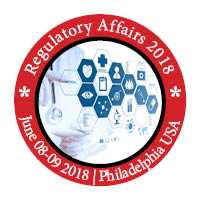
Muhammad Naeem
Indus Pharma (Pvt.) Ltd., Pakistan
Title: Risk based manufacture of pharmaceutical products
Biography
Biography: Muhammad Naeem
Abstract
Introduction: The use of multiproduct facilities for the production of pharmaceutical products is need of time to allow products to be brought to patients in a timely and cost-effective manner. Doing this safely requires an understanding of the products, the facilities, the processes, and the equipment and the risks posed by this combination. The major risk of concern ithin shared facilities is the risk of cross-contamination. New GMP guidance for the EU came into effect in 2015 that requires a risk management process to determine if products can be safely manufactured in shared facilities. This new GMP requirement left industry unsure how to perform and document these risk assessments. User must understand the relationship of hazard, exposure, and risk. If done properly, the stakeholders should be able to demonstrate a full understanding of the processes being evaluated. A consistent approach across the hazard continuum is integral in this approach so that the regulators can be confident that a well thought out plan to reduce risk to an acceptable level has been established. Professionals in the pharmaceutical industry should move forward with a consistent approach on setting acceptable limits to assess the
potential of cross-contamination causing an undue risk to patient safety. This approach is intended to enable manufacturers to implement appropriate controls to facilitate safe and affordable drug product manufacturing without complicating the engineering solutions
Recommendations: it has become clear that in the pharmaceutical sector, an adequate risk management system is not only required by regulatory stakeholders but may also result in a competitive advantage when appropriately implemented. Hence, to be prepared for future challenges, more predictive and proactive strategies towards product and process development, quality assurance and quality control, product life-cycle management and business operations in general are required. Risk management can be seen of one major aspect of these approaches with the goal to facilitate innovation and continuous
improvement. The chosen system in quality management represent major aspects of the pharmaceutical quality assurance system and their enhancement with regard to risk management can be well used as primer for further integration activities.
Conclusion & Significance: It is important to have an escalation process that allows management to be informed of areas that have risk that is unacceptable or near unacceptable. The holistic approach that is described in this course is predicated on the fact that all of those involved have received appropriate education or training and have ready access to supporting risk assessment and management documentation.

